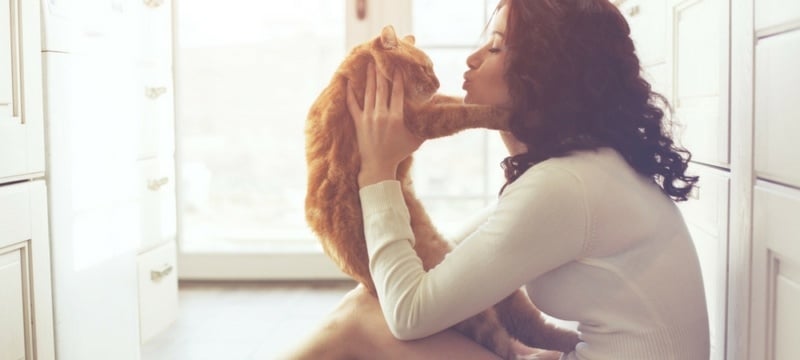Even though it can be painful to think about a hurt or sick pet, you might want to consider purchasing pet health insurance—and even pet life insurance. (Yes, it does exist!)
It can be difficult to value a pet’s subjective worth, whether you’re considering the cuddliness of a kitten, the loyalty of a dog, or the awe-inspiring status of a show horse.
Whether exotic or domestic, for business or companionship, pets can be as susceptible to illness, injury, and death as their human owners. This could result in large veterinary bills or an asset loss, if your animal is highly valuable or a source of income.
This year, it’s projected that Americans will spend approximately $60 billion on their pets, with $15 billion on veterinary care, including health insurance and out-of-pocket costs, according to the American Pet Products Association.
Insuring pets for health and life is ultimately a personal financial decision, many experts say. There are variables to weigh in determining whether pet health or life insurance is worth the investment, as well as qualifications to consider, as not every pet may meet insurers’ requirements for coverage. Here is some information that may help you determine if insurance for your pet is right for you.
Pet health insurance
Pet health insurance plans look similar to human health insurance in terms of premiums, deductibles, and copays. Owners often can choose from traditional coverage (basic, comprehensive, or well-care protection), or they can select HMOs or discount plans. These plans can apply to all types of animals and can cover accidents (such as vehicle collisions or those caused by natural disasters), illness (including ear infections, cancer, or diabetes), and wellness care, such as annual checkups, vaccinations, and dental cleanings.
Pet health insurance premiums can cost between $10 to $35 a month, with deductibles ranging from $50 to $100, depending on the coverage and the insurance provider’s analysis of a pet’s age and health.
When considering costs, know that many pet health insurance policies require owners to first pay for veterinary services and then submit a claim for qualifying reimbursements. There’s typically no network of doctors related to most pet health plans, so owners usually can see any licensed veterinarian.
Curtis Steinhoff, director of pet insurance communications for Nationwide, says his company processed more than 1.3 million pet health insurance claims in 2014 and insures more than 550,000 pets. He notes that it’s important to seek out an annual deductible, not a per-incident or per-claim deductible. “More than 85 percent of the pet insurance claims Nationwide sees are for under $600,” he says.
While each provider’s qualifications differ, Nationwide only insures pets under the age of 10. Other agencies may exclude specific animal breeds because of their susceptibility to certain health problems.
Although some people may prefer to set aside money in case of a pet emergency vs. investing in pet health insurance, Steinhoff recommends weighing the pros and cons to this approach. “If your pet sustains an injury or an illness early on in life, that account may not have enough money accrued to cover the entire expense,” he says. “With pet insurance, you will not only have coverage from day one of your policy effective date but that coverage will continue for the life of your pet,” assuming the policy is valid.
Pet life insurance
Pet life insurance typically covers animals that pass away or are stolen while being transported, or during other events specified in the policy. Also called animal mortality insurance, these policies usually apply to cattle, horses, police dogs, show animals, or exotic animals owned by individuals, zoos, and entertainment groups.
Insurers generally require an animal to be worth at least $1,000 to be considered for a policy, says Mitchel Kalmanson, principal at Lester Kalmanson Agency Inc., an insurance company that specializes in animal mortality insurance and one of only a few nationwide companies that handles policies for exotic and zoo animals.
For 30 years, Kalmanson has insured animals from biomedical industry rats to honey-producing bees, as well as exotic animals such as bonobos and dolphins. He says buying pet life insurance comes down to one economic question: Can you afford the cost of replacing your animal?
Each plan is unique, with the pet’s age, sex, role in the policyholder’s life, and even whether it’s been sterilized being used for risk assessment, Kalmanson says. These are the elements that usually dictate the policy’s cost.
Two types of life insurance can cover animals. The first is full mortality insurance, which covers diseases, accidents, and natural disaster–related deaths, Kalmanson says. The second kind, restricted peril insurance, covers fatalities by accident or natural disasters only.
More common policies, offered by a greater number of insurance companies, relate to livestock mortality insurance. These policies typically cover loss of an animal due to accident or natural disaster. The policy’s cost is often determined by the animal’s value and projected profit from it.
Insuring your pet is a decision that requires research, much like finding a policy for a human. While it may be difficult to imagine your pet injured or deceased, finding appropriate insurance while your pet is alive and well may help cover the rest of your future together.






